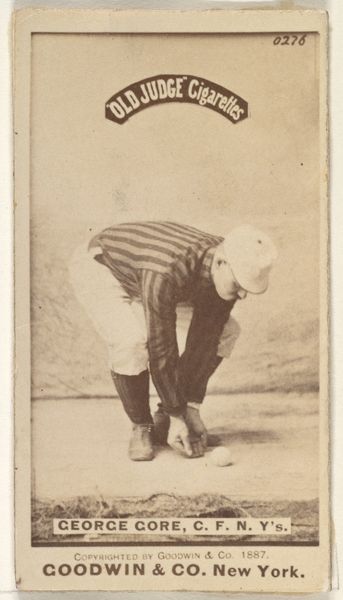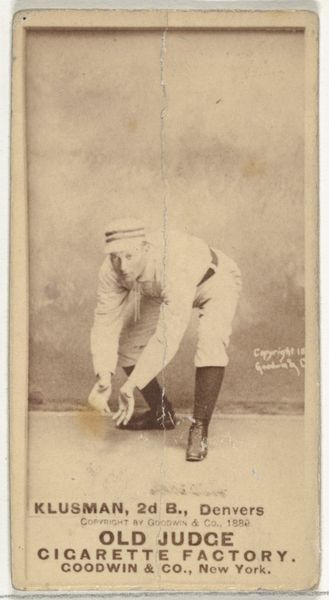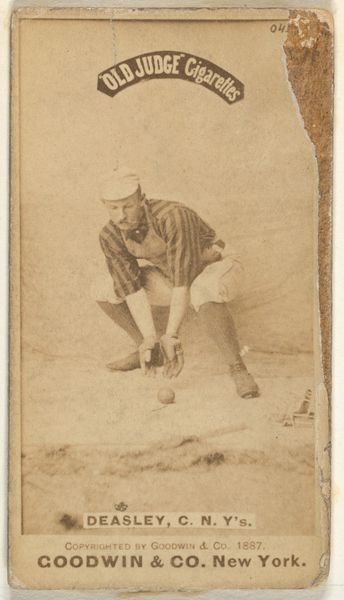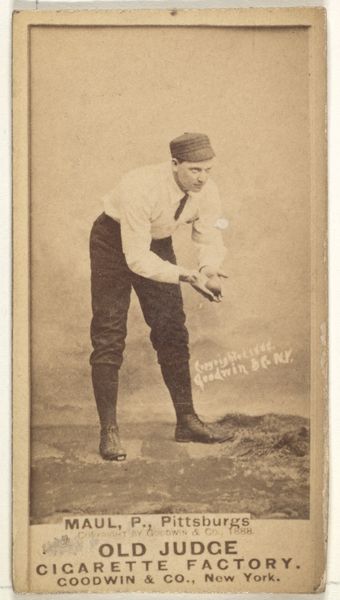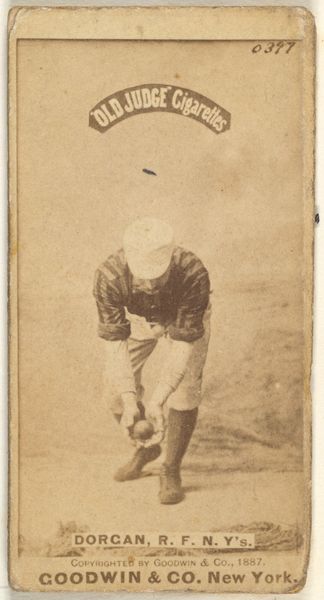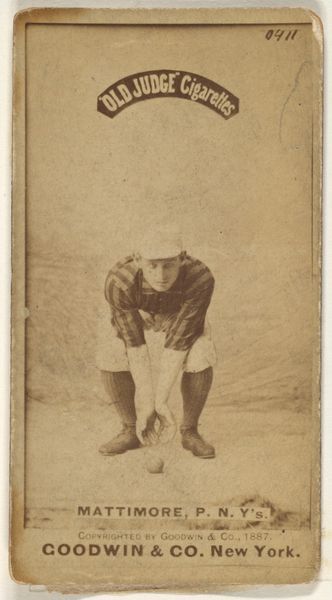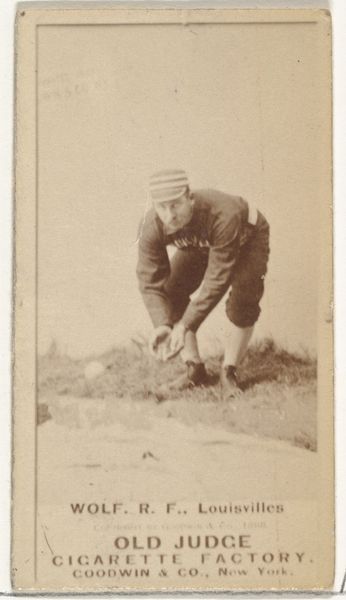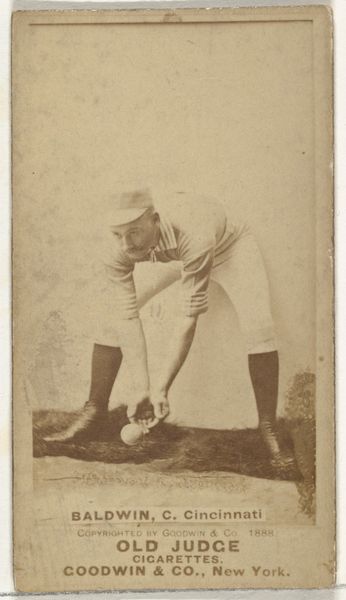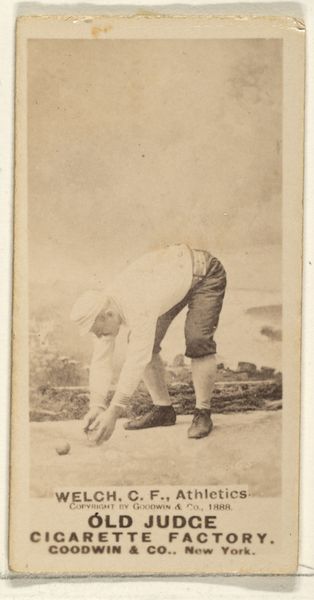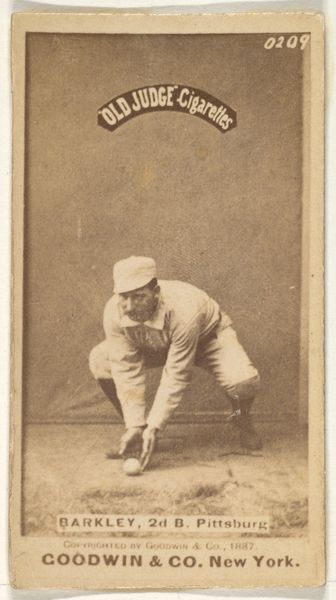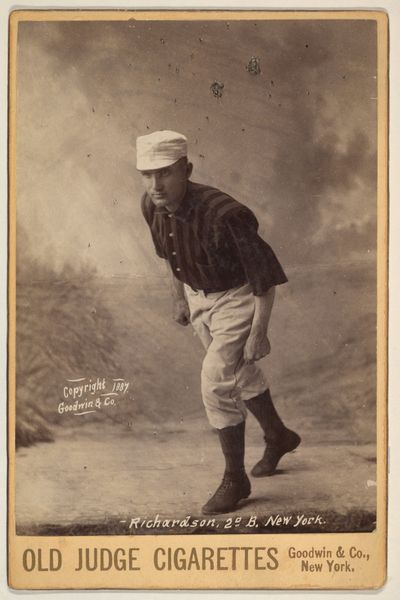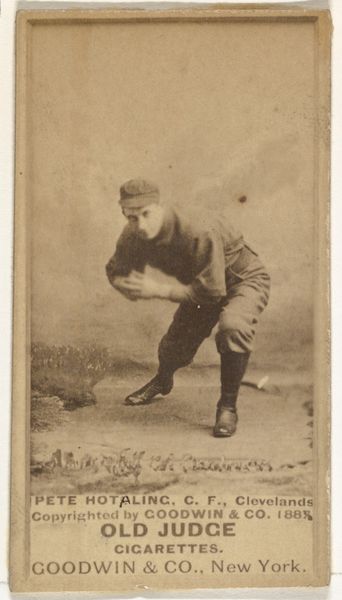
Gore, Center Field, New York, from the series Old Judge Cigarettes 1888
0:00
0:00
drawing, print, photography
#
portrait
#
drawing
#
still-life-photography
#
pictorialism
# print
#
impressionism
#
landscape
#
baseball
#
photography
#
men
#
athlete
#
realism
Dimensions: sheet: 6 1/2 x 4 3/8 in. (16.5 x 11.1 cm)
Copyright: Public Domain
Curator: This is a piece called "Gore, Center Field, New York" from the series "Old Judge Cigarettes," made in 1888 by Goodwin & Company. It's currently housed here at the Met. What are your initial impressions? Editor: Well, immediately, the sepia tone and the figure’s hunched posture give it a somewhat melancholy feel, even though it depicts an athlete. It really speaks to the early days of baseball and the physical labor involved. Curator: Absolutely. Considering the era, the piece intersects with narratives around labor, immigration, and the burgeoning popularity of baseball among working-class men. It presents an idealized version of masculinity at a time of immense social change and rapid industrialization. Editor: And looking at the materials, it's a photograph reproduced as a print for commercial purposes—specifically, tobacco advertising. This highlights the intersection of leisure, consumerism, and the manufacturing processes that underpin the growth of popular culture. Curator: It's fascinating to think about how images like this helped shape ideas about national identity and leisure. Note that Gore’s identity as a baseball player in New York reinforces dominant narratives of the American Dream, excluding those who didn’t fit into this particular mold. Editor: The composition, too, draws my eye to how the printing technology facilitated mass distribution of images of athletes, turning them into commodities themselves. And it served to bolster the industry sponsoring this…a carefully considered promotional synergy, you might say. Curator: It certainly promoted ideals related to a very particular consumer base. Understanding this artwork requires an understanding of how baseball cards served as a vehicle for defining norms and values in an era marked by deep social divisions, especially along lines of gender, class, and race. Editor: By tracing the material conditions of this image's creation, we also unveil the layers of labor that supported its production—from the players to the factory workers churning out these cards for "Old Judge Cigarettes." Curator: Examining these complexities allows us to question who is centered and who is marginalized. How can we interpret historical images while dismantling ingrained structures of power? Editor: I agree. And with the layers of photography, printmaking, distribution, it's almost a case study in how art and advertising converged. There's something uniquely democratic about that process. Curator: Understanding the social dynamics at play in the creation and consumption of "Gore, Center Field, New York," illuminates not only the past but also informs contemporary discussions on sports, advertising, and cultural representation. Editor: It really does underscore the powerful, intertwined relationships between the cultural industry, athletic ideals, and the end consumers in American society.
Comments
No comments
Be the first to comment and join the conversation on the ultimate creative platform.
